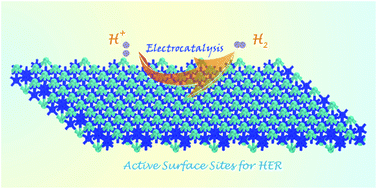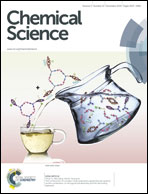Atomically-thin molybdenum nitride nanosheets with exposed active surface sites for efficient hydrogen evolution†
Abstract
Exploring efficient electrocatalysts for hydrogen production is one of the most promising pathways to face the energy crisis in the new century. Herein, we highlight metallic molybdenum nitride (MoN) nanosheets with atomic thickness as highly efficient platinum-free electrocatalysts for the hydrogen evolution reaction (HER). Theoretical calculations demonstrate that the atomically-thin MoN nanosheets show metallic behavior, which can effectively facilitate electron transport during the catalytic process. Structural analyses reveal that the surfaces of the atomically-thin MoN nanosheets are wholly comprised of apical Mo atoms, thus providing an ideal material prototype to reveal the role of Mo atoms during HER catalysis. Through detailed investigations of the HER activity, the active surface sites of the atomically-thin MoN nanosheets are identified, of which the surface Mo atoms can act as the active sites for transforming protons into hydrogen. This novel mechanism will not only broaden our vision on understanding the HER mechanism for other Mo-based electrocatalysts, but also benefit the exploration and optimization of advanced catalysts for future energy production.

- This article is part of the themed collection: Celebrating 15 years of exceptional research in Chemical Science

 Please wait while we load your content...
Please wait while we load your content...